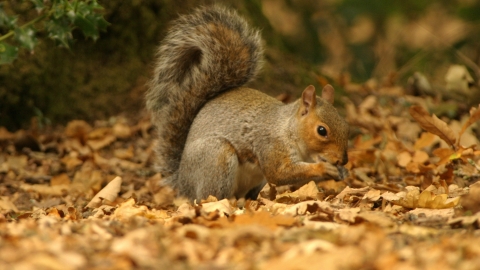Permit only reserve.
Know before you go
Dogs
When to visit
Opening times
Permit only.Best time to visit
April to JulyAbout the reserve
The woodland is species-rich and the presence of several plants confined to primary woods, all suggest that much of Boons Copse is of considerable antiquity. Pendunculate oak (Quercus robur) is the dominant canopy tree with ash (Fraxinus excelsior) and aspen (Populus tremula)scattered throughout. The shrub layer is dominated by hazel (Corylus avellana), but has a diversity of other species including field maple (Acer campestre), common dogwood (Cornus sanguinea) and crab apple (Malus sylvestris). Ancient woodland indicator species include abundant wild service tree (Sorbus torminalis) and wych elm (Ulmus glabra).
The base-rich soils support a diverse ground flora that also includes a number of ancient woodland indicators such as greater butterfly orchid (Platanthera chlorantha), and common broomrape (Orobanche minor). Other significant woodland plant species include wood anemone (Anemone nemorosa), sweet woodruff (Galium odoratum), stinking iris (Iris foetidissima), early purple orchid (Orchis mascula), goldilocks (Ranunculus auricomus), sanicle (Sanicula europaea) and wood speedwell (Veronica montana). Adders tongue fern (ophioglossum vulgatum) occurs in patches on the rides.
There is a diverse woodland fauna and dormice (Muscardinus avellanarius) appear to be present through most of the ancient woodland. Roe deer (Capreolus capreolus) and grey squirrel (Sciurus carolinensis) are present. A diverse woodland bird population occurs with resident great spotted woodpecker (Picus viridis), nuthatch (Sitta europaea) and summer nesting species that have included nightingale (Luscinia megarhynchos) in the past.
There is a diverse invertebrate fauna within the woodland. Speckled wood (Pararge aegeria) butterflies are common throughout and the silver-washed fritillary (Argynnis paphia) occurs. Common blue occur in the glade.
The woodland forms a significant feature in the local landscape as part of a series of small woodlands amongst a network of deciduous hedgerows in an agricultural landscape.



